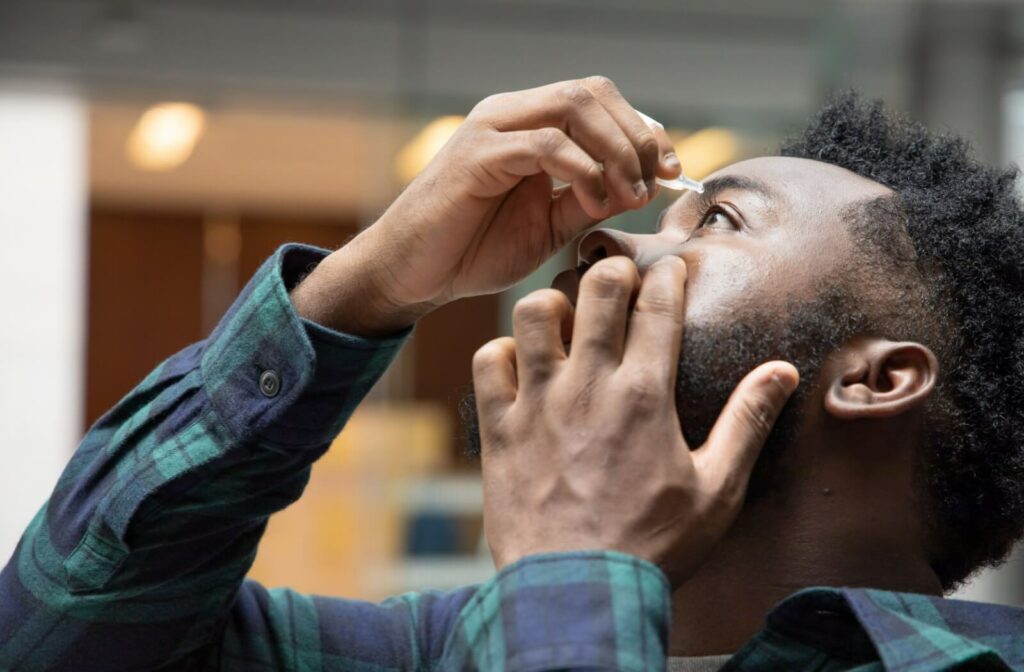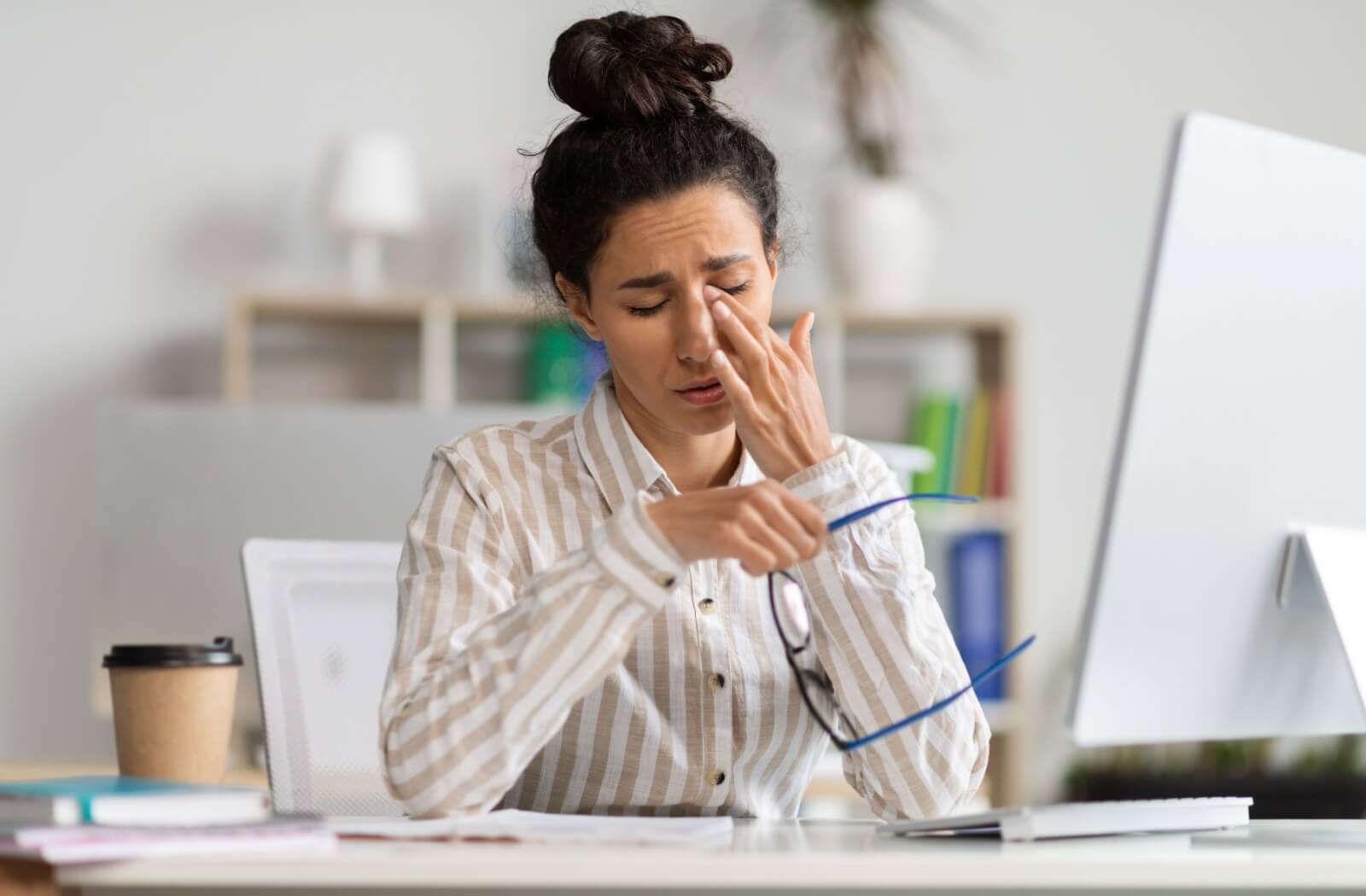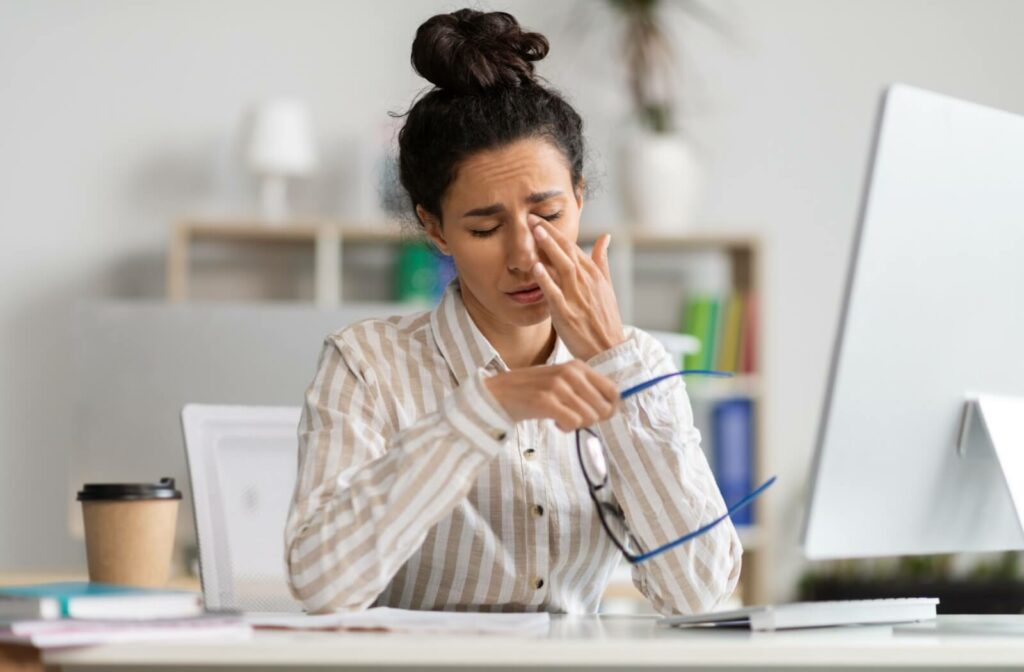Dry eye might not sound like a big deal at first; it’s just a bit of irritation, right? But if left untreated, dry eye can lead to more serious complications.
While dry eye itself doesn’t directly cause blindness, severe cases can increase the risk of infections or damage to the cornea, the clear front layer of your eye, which plays a key role in vision.
Regular eye exams are crucial to identifying and addressing dry eye early before it affects your vision. Thankfully, with the right care, you can prevent dry eye from taking a toll on your sight. From everyday changes to modern treatments, there are plenty of ways to keep your eyes comfortable and your vision clear.
What Is Dry Eye?
Dry eye syndrome occurs when the eyes don’t produce enough tears or when the tears evaporate too quickly, leaving the surface of the eyes dry and unprotected. Tears play a crucial role in maintaining eye health; they provide lubrication, clear debris, and protect against infections.
Some of the most common signs of dry eye include:
- A gritty or sandy sensation in the eyes
- Redness and irritation
- Blurred vision that improves with blinking
- Burning or stinging
- Sensitivity to light
While these symptoms may seem mild at first, untreated dry eye can escalate into something far more disruptive.
How Severe Can Dry Eye Get?
When left untreated, dry eye can lead to complications that may seriously affect your quality of life. For example, chronic dryness can damage the cornea—the clear, dome-shaped surface of your eye. Over time, this damage can impair your vision or make you more susceptible to eye infections.
Corneal ulcers and scarring are some of the more extreme complications linked to dry eye. Both can cause long-term vision issues if they aren’t addressed quickly.
The discomfort of persistent dry eye can also take a toll in other ways. Tasks like working on a computer, reading, or even driving can become increasingly challenging, especially when the symptoms worsen during the day.
Underlying Conditions Linked to Dry Eye
Dry eye isn’t always a standalone problem. It can often signal other health issues that need attention. Autoimmune diseases, in particular, are closely linked to chronic dry eye. Conditions that can reduce tear production and lead to prolonged dryness include:
- Sjögren’s syndrome
- Rheumatoid arthritis
- Lupus
Other factors that may contribute to dry eye include:
- Hormonal changes, such as those during menopause
- Thyroid disorders
- Certain medications, including antihistamines and antidepressants
Preventing Serious Complications of Dry Eye

Managing dry eye is important for keeping your eyes healthy and comfortable. Here are some practical strategies to prevent complications and preserve your vision:
- Stay hydrated: Drinking plenty of water supports tear production.
- Use artificial tears or eye drops: Over-the-counter drops can help supplement natural tears.
- Blink often: Remember to blink regularly, especially when using screens, to avoid tear evaporation.
- Wear sunglasses: Sunglasses with wraparound frames help protect your eyes from wind and sunlight, 2 major irritants for dry eye.
- Maintain a healthy diet: Omega-3s, found in fish and flaxseeds, are known to promote eye lubrication.
If these at-home strategies aren’t enough, professional treatment options can take your care to the next level.
When to See an Eye Doctor for Dry Eye
It’s tempting to dismiss dry eye as minor, but prolonged symptoms often warrant professional attention. It’s time to consult an eye doctor if you experience:
- Persistent irritation
- Recurrent redness
- Blurry vision that interferes with your day-to-day tasks
Optometrists can diagnose dry eye accurately using tests designed to measure tear production and identify inflammation. They can also pinpoint whether your symptoms are linked to other health conditions.
Treatments for Dry Eye
For those with persistent dry eye or more severe symptoms, these treatments offer some solutions:
- Radiofrequency (RF): RF treatment stimulates the glands along your eyelids, helping to restore natural tear production. It’s ideal for making long-term improvements.
- Intense pulsed light therapy (IPL): Originally used for skin conditions, IPL is now an effective treatment for inflammation-driven dry eye. It helps reduce redness, improve tear quality, and boost eye health.
- Zocular eyelid system treatment (ZEST): This treatment gently cleanses and exfoliates the eyelids, combating sources of irritation like bacteria or blocked oil glands.
- Eye-safe makeup: For those who wear makeup, Èyes Are The Story offers optocosmetics like mascara and eyeliner that are designed specifically for sensitive eyes. These products allow you to maintain your style without compromising comfort or health.
Keep Your Vision Safe from the Effects of Dry Eye
Dry eye might begin as a mild inconvenience, but without proper care, it can develop into a far more serious condition. The good news is that with effective management, you can protect your vision and avoid complications like corneal damage or vision impairment. If you’ve been experiencing symptoms of dry eye, don’t hesitate to take the next step. Book an appointment with Arc Eye Care to explore options for your needs.


